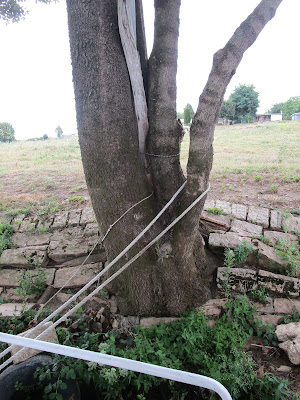We set off in good time, expecting a long day. The harbour was tight, but we eased out without problems. There was little
traffic on the river, though Jumbo’s appearance, charging round a bend,
reminded us that this is a commercial waterway.
Naturally there were plenty of cows to photograph, whether standing
or sitting. But birds were limited to a few swans and the occasional heron. I seem
to remember far more bird life in earlier years – egrets and oyster catchers,
kites and cormorants. Now it seems to be just swans – very elegant, but quite
boring.
There are quite a few handsome houses along the river, like this
one.
Also fishing encampments. Sometimes families, sometimes groups of
friends.
We negotiated the first lock of the day in company with a luxury
hotel barge, which passed us soon after we all emerged, guests engaged in pre-lunch cocktails. We then found a
convenient tree to tie up to for our lunch.
After lunch, we soon found ourselves at Seurre, where we had envisioned
spending the night. Although it was only early afternoon, the hotel barge had packed it in
for the day. On reflection, however, we
decided to press on to St Jean.
A young German couple in a sailing boat was waiting in the
lock, our last of this trip. As the water rose, the thunder began rumbling
ominously all around. As I remarked to the lady lock-keeper on the radio as we
departed, “Aprés nous la deluge”. And
indeed it was. Lashing rain for about half an hour. We felt quite sorry for the
young Germans as we overtook them. The awning over their cockpit did not look
very effective. But young people are tough, and sailing people are used to
getting wet, so I expect they were OK.
As we approached St Jean, we saw the barge Minstrel, which
overtook us so abruptly going into Chalon yesterday. It was loading at an impressive grain elevator.
We also spotted Saskia’s winter quarters, but couldn’t
see the car, which we left in a nearby car park a couple of months ago. We'll collect it tomorrow.
Coming home to St Jean once more.
And turning into the port under the bridge. Just then, of course, the rain came on
again. But we found a berth on our usual pontoon, despite the appalling weed
infestation. The electricity works, and also the WiFi.
So that is the end of another happy cruise. We calculate that we
covered some 1,600 km. Not too many locks this time. Highlights were
certainly the great cities of Avignon and Carcassonne, Narbonne and Montpellier,
Macon and Louhans. Some people complain about the hire boats and their often
inexperienced crews, but we welcome them. Thanks to them, and the financial
contribution they make, facilities everywhere have improved, and we benefit
greatly from that. There are more pontoons for mooring, with electricity and water supplied. Hire boats can also provide a certain amount of innocent entertainment! Of course, the increased automation comes at a cost - less personal contact with lock-keepers, for example.
We haven’t made any plans for next year, but will be examining the map of the European waterways to see what takes our fancy. One thing we have decided: no more Rhone/Saône for a while. It would have been nice if we had had the time to get through to Bordeaux this time, and also explore the Baïse and the lower Lot. But that will have to wait for a few years. These two big rivers do have their longueurs, particularly going upstream.
Thanks to those who have followed these meanderings. Now we sign
off till 2018.



























































